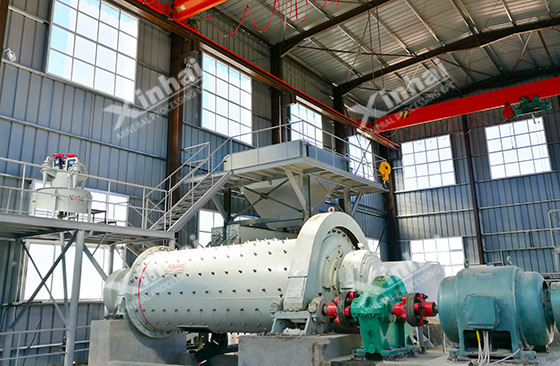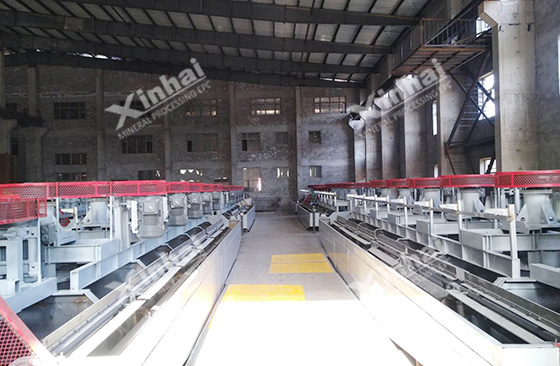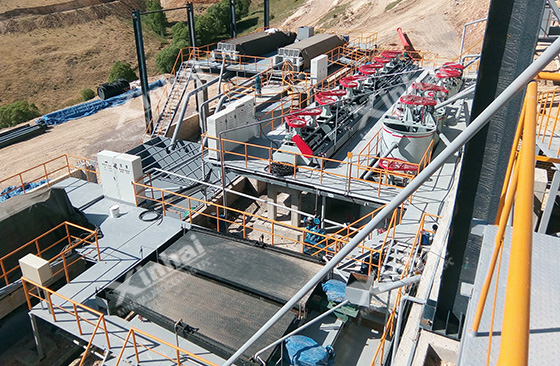There are many kinds of silver ores in nature, among which the silver-bearing ores with production value include natural silver, gold and silver ore, argentite, pyrargyrite, horn silver, dyscrasite. The silver ore is often associated with lead-zinc, copper, gold, and limonite, and can be recovered with other minerals. In this paper, we will start with the mineral properties of silver ore, take you to understand the method used for the extraction of silver ore.
In the silver-bearing ores, the disseminated grain size of silver Mosaic is fine and the occurrence state of silver is complex. Therefore, the grinding stage is very important in the preparation stage of the silver extraction process. Due to the complex composition of the silver-bearing ores, the methods used for the extraction of silver are diverse, including the flotation method, cyanidation method, flotation- cyanidation method, gravity separation-flotation method. In the following, we will describe the preparation stage and the separation stage for the extraction of silver respectively.
Use the table of contents below to navigate through the guide:
01Preparation stage for the extraction of silver
In the preparation stage for the extraction of silver, the grinding stage has the large influence on the recovery effect of silver, the grinding section and grinding fineness are decided according to the dissemination characteristics and occurrence state of silver ore, and the crystal size of the silver mineral is between 5-10μm, its main carrier size is coarser than silver mineral itself. Therefore, the silver mineral does not need to achieve monomer separation absolutely in the grinding stage, but the carrier needs full separation.

However, the above is a relatively ideal condition. Apart from some silver minerals with copper, lead, zinc and other minerals as carriers, some silver minerals are still dispersed in gangue minerals in an irregular form, or the silver minerals are embedded in fine grains, while other sulfide minerals are relatively low in content. For the extraction of these silver ores, the monomer dissociation of fine-grain embedded silver minerals can be achieved by adding the fine grinding stage.
02Separation stage for the extraction of silver
1. Flotation used for the extraction of silver
In the silver extraction process, the flotation process is often used to extract silver and its associated metals. According to the characteristics of the silver ore, the optional flotation processes include priority flotation process, mixed flotation process, partial priority flotation process, partial mixed flotation process, asynchronous flotation process, distributed flotation process, equi-flotation process, branch stream flotation process. For the flotation process used for the extraction of silver, the factors needed to be focused mainly include the pH value of pulp and the flotation reagent combination.

◆ The adjustment of pH value
For the flotation process used for the extraction of silver, it is necessary to avoid the use of some regulators, because the regulators (such as lime, cyanide) has the inhibiting effect on the silver mineral. Besides, the dosage of sodium sulfite, sodium sulfate, starch shall be paid attention to when they are used, the excessive dosage will be against the silver flotation. The suitable pH value of silver flotation is 6-8, which shall be adjusted according to the recovery of other minerals under the comprehensive recovery condition.
◆ Appropriate flotation reagent combination
Except for the grinding fineness, pH value of the pulp, the appropriate flotation reagent system is the key factor influencing the ore dressing indexes of the extraction of silver. The main collectors of silver and its carrier of metal sulfide minerals mainly include ammonium dibutyl dithiophosphate, dianilinodithiophosphoric acid, sodium ethylxanthate, sodium n-butylxanthate, ethyl thio carbamate, thionocarbamates, etc. Adopting the mixed collectors on the basis of a single collector can enhance the flotation effect for the extraction of silver. The common collector combinations used for the extraction of silver include di-iso-butyl dithiophosphate and xanthate, dianilinodithiophosphoric acid and xanthate, etc.
2. Cyanidation used for the extraction of silver
The cyanidation method is applicable to the gold and silver symbiotic minerals, as well as the silver ore that has little sulfide content, fine-grained dissemination and the quartz is the main gangue mineral. The leachable silver minerals include silver oxide, elemental silver and silver sulfide. The principle of this silver extraction process is to dissolve the silver mineral in the precious solution by cyanidation solution and then extract the silver by zinc replacement. At this stage, the factors affecting the extraction of silver include the amount of sodium cyanide, the dosage of oxygen or leaching agent and the leaching time.
3. Combined beneficiation used for the extraction of silver
The gravity separation-flotation process is suitable for the silver ore with high-grade but uneven particle size, easy to dissociate, which can improve the recovery rate of silver and reduce a certain of mineral processing cost. The flotation-cyanidation process is suitable for the extraction of silver minerals embedded in gangue minerals, which can prompt the recovery rate of silver.

The above is the aspect of the extraction of silver. In the actual production, please carry out the mineral processing test first, then decide the method used for the extraction of silver in a scientific and reasonable way, thus getting the ideal mineral processing index.


 marketing@ytxinhai.com
marketing@ytxinhai.com  0086 13810327080
0086 13810327080 






































































































 CHAT
CHAT MESSAGE
MESSAGE



